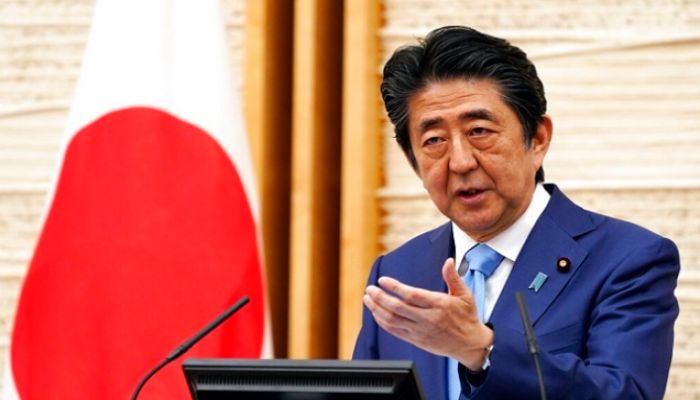
Desk Report
Publish: 04 May 2020, 05:14 pm

Japanese Prime Minister Shinzo Abe extended the state of emergency over the coronavirus to the end of May on Monday, saying that lifting sanctions will be too early to start.
Yet Abe said the condition would be checked in around two weeks, and the steps could be removed by the end of the month provided the fresh infections were slow sufficiently.
And he indicated that there would be no further extension of the emergency, saying May would be when the country "presses towards the exit".
"I must be candid and ask you to continue your efforts for some time," Abe said at a press conference after announcing the extension.
"At this point, the decrease in people infected is still not at a sufficient level."
Abe declared a month-long state of emergency that initially covered Tokyo and six other regions on 7 April, and later expanded it to include the whole world.
This was set to end on 6 May, and Abe claimed that the interventions had lowered the number of new infections from about 700 a day to one percent.
But he said the number of new cases was still outpacing the approximately 100 people discharged from hospital nationwide each day.
"We must decrease the number of newly infected people to below that level" to reduce pressure on the country's healthcare system, he added.
Japan's epidemic of virus remains low relative to that reported in areas of Europe and the United States, with more than 15,000 cases registered and 510 deaths registered.
However, the extension was welcomed by all specialists giving recommendations to the government and provincial governments, despite fears that a rapid increase in cases remains likely.
The state of emergency falls far short of the harshest measures seen in parts of Europe and the United States. It allows local governors to urge people to stay at home and call on businesses to stay shut.
But officials cannot compel citizens to comply, and there are no punishments for those who fail to do so.
The Government is calling on people of 13 high-risk prefectures, including Japan's biggest towns, to start slashing communication person-to-person by 80 per cent.
However, once anti-virus steps are provided, hospitals, libraries and certain other buildings may be allowed to reopen.
For the rest of Japan, prefectures will be allowed to loosen restrictions on business closures and small gatherings but residents will still be asked not to travel outside their home regions. Bars and nightclubs will be asked to remain shut.
It remains unclear when and whether schools -- many of which have been closed since March -- will be able to reopen, with officials recently suggesting a possible phased approach with certain key grades resuming before others.
Japan recorded its first coronavirus infection in mid-January and came under early pressure with a mass outbreak on the Diamond Princess cruise ship docked off the city of Yokohama.
Despite so far avoiding the devastating tolls seen in places like Italy and New York, there have been persistent fears that Japan's healthcare system could be quickly overwhelmed by a sudden spike in infections.
There are just five ICU beds per 100,000 people in Japan, less than half the number in Italy, and doctors' associations have warned that hospitals are already stretched thin.
Steps have been introduced to try and relieve strain, including returning patients with minor complaints and hotels for isolation rather than holding them in overcrowded hospitals.
The government has also said it is increasing testing capacity but continues to face criticism for the relatively low numbers of tests being carried out, in part because of stringent criteria.
Source: AFP
Subscribe Shampratik Deshkal Youtube Channel
© 2024 Shampratik Deshkal All Rights Reserved. Design & Developed By Root Soft Bangladesh